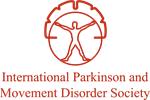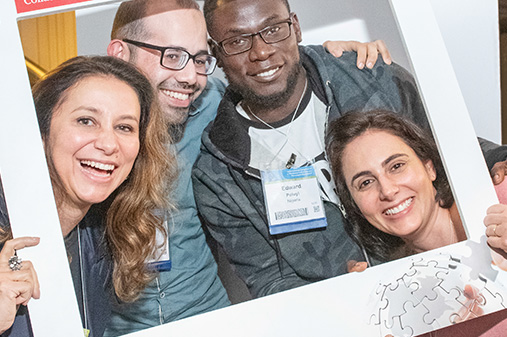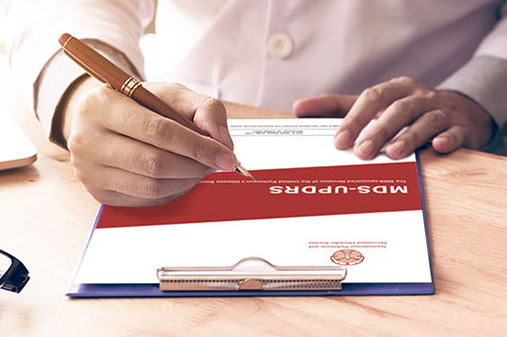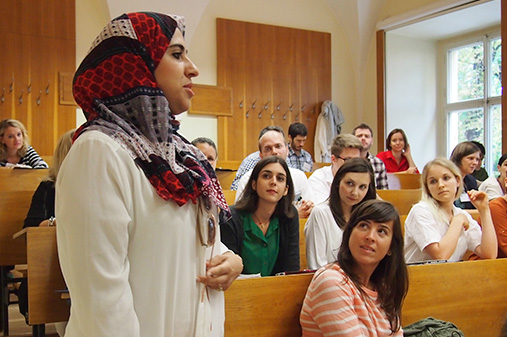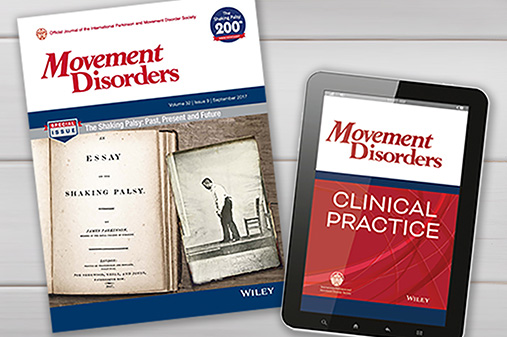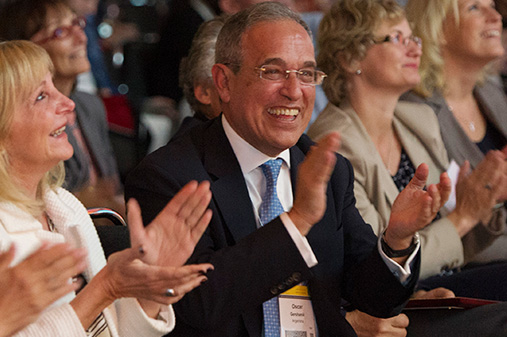Current status of functional neurosurgery • 2025 MDS Congress
Dr. Mitra Afshari: [00:00:00] Aloha from beautiful Honolulu, Hawaii, and welcome to the MDS Podcast, the official podcast of the International Parkinson and Movement Disorder Society. I'm Mitra Afshari, I'm an associate editor of the podcast series and your host today, and today we have Professor Jill Ostrem from the University of California San Francisco.
View complete transcript
She's a world renowned expert in neuromodulation. She's leading one of the busiest. And scientifically robust DBS programs in the US. And we just wanna thank you so much for being here, Jill, with us. How are you doing?
Prof. Jill Ostrem: I'm doing well. Thank you for having me. This is such an honor.
Dr. Mitra Afshari: Thank you. This is a really special moment for me actually because I'm an alumni of the UCSF Movement Disorder Fellowship, and Jill has been one of my mentors.
And today what we're gonna discuss with Jill is essentially [00:01:00] neuromodulation. Where have we been the last five years? Where are we going in the next five years? Yesterday at one of the plenary sessions, we had one of the first lectures on DBS at the Congress. That was with Professor Elena Moro.
And she kinda gave us a really nice big picture view of the latest evidence for the two more common invasive therapies for Parkinson's disease right now, DBS and focus ultrasound. And then later this week, Elena is actually gonna be moderating a session where you'll be taking a deep dive into adaptive DBS with your colleague Simon Little.
And so we really wanted to take this opportunity to bring you on the podcast and hear your wisdom on the state of neuromodulation. So much has changed over the last years. When I was at UCSF back in 2018, I remember you and Phil Starr were still working with the Medtronic PC plus S system, where you had the little [00:02:00] cortical strips to study the LFPs. And now we've actually have the closed loops system is built into the leads now, and so you're really able to sense the pathologic oscillations and deliver stipulation at the same time. And so things have come a long way just over the last, five, seven years. Tell us a little bit about what your take is on like the last five years in the DBS world.
Prof. Jill Ostrem: Thank you for that. Yeah, it's really an honor to be here speaking to you today, and I love seeing you in this role actually. It's very fun. You're right, DBS has changed. It continues to evolve. It's been, one of the most powerful therapies we have for Parkinson's disease, motor symptoms.
And the way we've applied it, for the last 20, 25 years has been pretty incredible. Just the power that we see that it can offer for treatment, but giving chronic stimulation to the [00:03:00] brain. Isn't exactly in line with kind of, we would imagine perhaps the most ideal way to do it because the brain is an organic electrical organ.
And so you would imagine that there would be something more sophisticated that we could do that might even result in better outcomes. And that's what this adaptive deep brain stimulation approach is going off of the fact that, we probably should be adjusting the stimulation in the brain rather than just giving chronic stimulation to perhaps be more specific to an individual's needs, what they're doing, if they're awake, if they're asleep, if they're moving, if they're not, if their medicines are working or if they're not.
And we are now at a point where we have systems like you mentioned that can sense brain rhythms off of the stimulating electrode and have that information be processed and presented in a way that can be visualized on a tablet that a programmer can look at and we can use some of that information to then [00:04:00] set up algorithms to adjust the stimulation intensity, usually the amplitude depending on what would be most appropriate for the patient.
And that's really novel and unique, right? We were doing it in research studies when you were with us in your fellowship, but now it's a commercially available product for some people with certain systems. And we're just getting there, with how to apply this and how to figure out who are the best candidates and how to do this in an efficient way.
So it's a huge moment. But we still have a lot to unpack and figure out how to use this powerful tool.
Dr. Mitra Afshari: It's amazing how far we've come in such a short period of time, but we're just scratching the surface. I think it was only just two weeks ago. When the ADAPT PD trial manuscript was released right in JAMA Neurology. And the ADAPT PD, which is formerly the manuscript is entitled Long-term Personalized Adaptive DBS and PD, a Non-randomized Clinical Trial.
And so you were part of that trial as well as several centers across the US, [00:05:00] Canada, and Europe. And I believe the trial lead was Helen Bronte from Stanford. And we won't get into too much of the nitty gritty of the trial, but since things are falling into place at the same time of this Congress, could you summarize Jill in your own words?
Just a brief kind of summary of how the ADAPT PD trial was conducted and ultimately what was the objective of the ADAPT PDs trial?
Prof. Jill Ostrem: Sure. Yeah. It's wonderful that this was finally published just a few weeks ago, like you said, and we will try to highlight a little bit about this trial results at our session on Wednesday. And Helen Bronte Stewart did lead this effort and she's been a real pioneer in this field, in terms of adaptive DBS.
This trial was designed by Medtronic. It was designed to show that there would be, hopefully, an equivalency between using this adaptive DBS mode of stimulation compared to continuous DBS. And the trial was successful in showing that it was possible to deliver adaptive DBS [00:06:00] and people weren't worse than continuous DBS and that it was safe.
So that was the intent of the trial wasn't really to prove. Adaptive DBS is better than continuous DBS, although there was some hints that people preferred being on many of them preferred to be on continuous DBS at the end of the study, which is interesting. But we learned a lot through the study itself.
Patients had to have a robust enough local field potential signal to enroll which we, weren't sure if people would even have enough of a signal to use as a digital biomarker or a physiological biomarker. At the time, we had legacy leads in place, not the newer sensit leads, which are better.
You're stimulating through the electrode, which is the same electrode, you're also getting the signal off of and how much interaction might there be from artifacts or cardiac rhythms. So there was a lot we were understanding. The protocol was amended midway through to include these newer sens site leads, which were also a directional case [00:07:00] capability.
So that was also nice to show that it was also possible to use those types of leads for this mode of stimulation. And I don't know how much you want me to go into this, but there was, there's really two ways that the stimulation could be set up in the adaptive arms. One is called dual threshold, the other one's called single threshold, which is confusing.
Dr. Mitra Afshari: Yeah that was my next question cause I was very curious about what that meant.
Prof. Jill Ostrem: Yeah, there was really two strategies in terms of how you would adjust the amplitude. And both of these were studied in this trial. And there were reasons behind that which we could go into, but the dual threshold is really a softer slower adjustment of the amplitude that occurs over minutes, not so fast, or the single threshold is very fast adjustment, really related to burst activity.
And so we don't know yet, which one of these modes is gonna be more appropriate for an individual patient, but they were both studied and they were both, found to be beneficial in terms of improving motor outcomes. [00:08:00] So we have them both now available to us commercially, and we're as a field now, I think, trying to unpack when we would use one or the other or how we would, decide or, so it's really unclear yet I think, which one is best for which patient.
Dr. Mitra Afshari: At the end of the study, the patients were asked if they wanted to stay in the continuous DBS mode, or if they wanted to choose one of the two adaptive DBS modes. And it seems like most of the patients chose the adaptive mode. Is that correct?
Prof. Jill Ostrem: That's true. There were people who couldn't tolerate being in adaptive DBS mode along the way. And so for people who couldn't tolerate one of the two, either dual or single threshold modes they could opt out of that and continue just with the one mode they could tolerate.
So there was a little bit of a selection issue there, but you're right at the very end of the trial for people who made it to the end. Most definitely patients prefer to remain in the adaptive mode.
Dr. Mitra Afshari: And the hypothesis is obviously that [00:09:00] in the adaptive mode, there's a little bit more control of fluctuations and there's less chance of stimulation induced side effects. Is that right? I don't know how much you guys have looked into in detail all of the different side effects, but what was your take on that data?
Prof. Jill Ostrem: Yes. I think this trial wasn't designed to really unpack all of those important questions. It was really, I think, to show proof of principle that this was possible and safe, but there was and there will be more, analysis coming out of the work that was done. Now that this primary paper has been published we did show that patients who had tremor is also still benefited.
And there was some concern that perhaps tremor, which isn't as related to the local field potential and the beta oscillatory frequency band. That it might not be as effective for tremor, but it still seemed to be fine in those tremor dominant patients that were included.
Dr. Mitra Afshari: Oh, that's super Interesting.
Prof. Jill Ostrem: And then I guess we've had some experience and [00:10:00] you as programming DBS patients for your whole career know that there's, in most systems the availability of patients to increase and decrease their amplitude on their own from their patient programmers. So we've sometimes used, adaptive DBS, but through the patient programmer over time for some people who are very sensitive to either dyskinesia or some other problem when their medicines are working or not working. But now that can be taken back and be just automated. There was an improvement in on time, in this cohort of patients over continuous DBS.
Not a huge amount, but a little bit. They were already pretty well managed. Remember, continuous DBS works pretty well.
But we, I think, the more we learn how to use this and we can get better at finding the best settings for someone in the right medications, in combination, people should have less fluctuations.
Dr. Mitra Afshari: And this morning, Jill, we heard from one of our junior awardees, Dr. Junghwan Shin . He [00:11:00] is from Seoul University and he presented his work on deciphering the specific kind of STN subpopulation of cells that's responsible potentially for the motor benefit with stimulation. And those are the parin cells. And he even presented that potentially the non-par vain cells could be responsible for some of those unwanted non-motor side effects, such as anxiety.
And so after hearing that lecture this morning. And he alluded to this, did this kinda get the wheels turning in your brain as to where we might be going with the next generation of DBS systems? I know again, we're just scratching the surface of adaptive DBS, but I'm sure being the expert that you are, you've been thinking about when you hear these lectures kinda where things could be headed.
Prof. Jill Ostrem: That's a good question. I think we're still not able to identify how to stimulate certain specific neuronal [00:12:00] subtypes. His talk was interesting and, that's wonderful. We can now start to tease it apart, but they are somewhat co localized. And so we may not be able to, with the current methods have a way to just stimulate those specific neurons.
They're probably all around each other.
Dr. Mitra Afshari: Right.
Prof. Jill Ostrem: But you never know. There might be ways to use different stimulation, patterns, that might affect certain neuronal subtypes, but this is, getting more complex
Than probably what we can really understand.
Yeah, but I know it's amazing the field is moving so fast. There's so much we've learned about the sub anatomy around the STN. And, with other connectomics and other, visualization packages that are existing too outside of physiology. Marrying the two I think has an incredible power to even make this more individualized for a certain patient.
Dr. Mitra Afshari: Absolutely. When I was at UCSF, I was just so amazed that you used, even though DBS is a therapeutic device, you really are using it to [00:13:00] learn more about the brain. And so with that, it's such a pleasure chatting with you, Jill, today, even though it was brief. I'm anxiously awaiting your talk in the next few days and I'm really proud to say that I'm one of your trainees and I've learned from you.
And thank you for taking the time to join us for this podcast today. So big mahalo to you.
Prof. Jill Ostrem: Thank you so much. It's been a pleasure. Thank you Mitra.
Dr. Mitra Afshari: Thank you. Bye-bye.

Jill Louise Ostrem, MD
University California San Francisco
San Francisco, CA, USA
